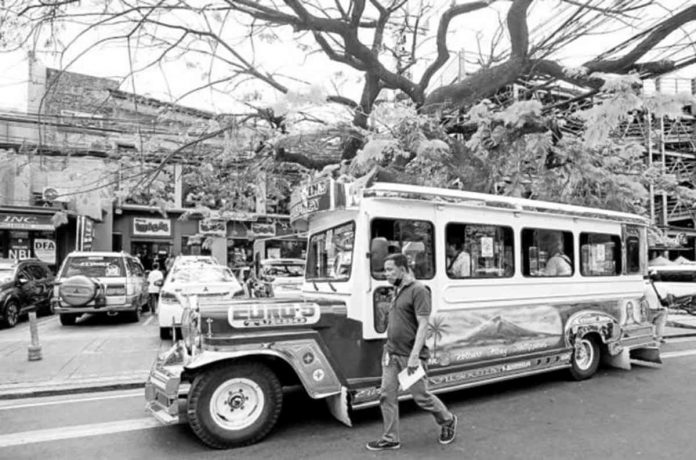
MANILA — A proposed model of a modern jeepney on Monday received the nod of Land Transportation Franchising and Regulatory Board (LTFRB) Chair Teofilo Guadiz III, convincing a transport group that the modernization program will finally push through under the current administration.
The locally manufactured prototype resembles the iconic look of a traditional jeepney, but incorporates upgraded features such as a higher ceiling that allows passengers to stand inside the vehicle, handrails, built-in security cameras, and an environment-friendly Euro 5 engine.
It has two doors — the main one at the right side and an exit door at the back, in which a ramp can be attached for persons with disabilities.
Juancho Caparino, chair of the Association of Committed Transport Organizations Nationwide Corp. (Actona), said the model was finished in 2019, but the previous administration was not open to discussions on its adoption.
“Now, after our talk with Guadiz, it seems like it will push through because he already approved it,” he said.
Cheaper than imports
The prototype costs around P1.3 million to P1.5 million, or half of the price of current minibuses or electric jeepneys on the roads that are imported.
After inspecting the unit, Guadiz noted that the model was still the traditional jeepney, but was improved to conform with the requirements of the Bureau of Philippine Standards, which certifies products for safety and quality in accordance with the Philippine National Standards (PNS).
If jeepney operators and drivers would adopt the prototype and ensure its compliance with the requirements, Guadiz said “there would be no need for phaseout” of traditional units.
“It’s cheaper, conforms with the PNS, and it preserves the iconic picture of the jeepney. That is acceptable for us and the jeepney operators may use that as a mode of transportation,” he added.
Guadiz called on local manufacturers to build the modern version so there would be no need to import.
Sarao Motors, one of the first jeepney makers in the Philippines established in 1953, developed the same model at their Las Piñas headquarters.
Ed Sarao, production and plant supervisor, estimated that it would cost around P1.5 million to P2 million to produce a unit of the modern jeepney.
In a bid to help on the financing side, the Department of Transportation is seeking an additional budget to raise the modernized vehicle subsidy to be granted to traditional jeepney operators.
Transportation Secretary Jaime Bautista told reporters on the sidelines of an event in Pasay City on Monday that they wanted to “increase [the subsidy] to around P260,000” from the current P160,000 per unit.
The transport chief added that the government could talk to financial institutions about the potential extension of the loan terms as a relief to jeepney operators currently opposing the modernization program because of the costly price tag of a new unit. (Jane Bautista, Tyrone Jasper Piad © Philippine Daily Inquirer)






